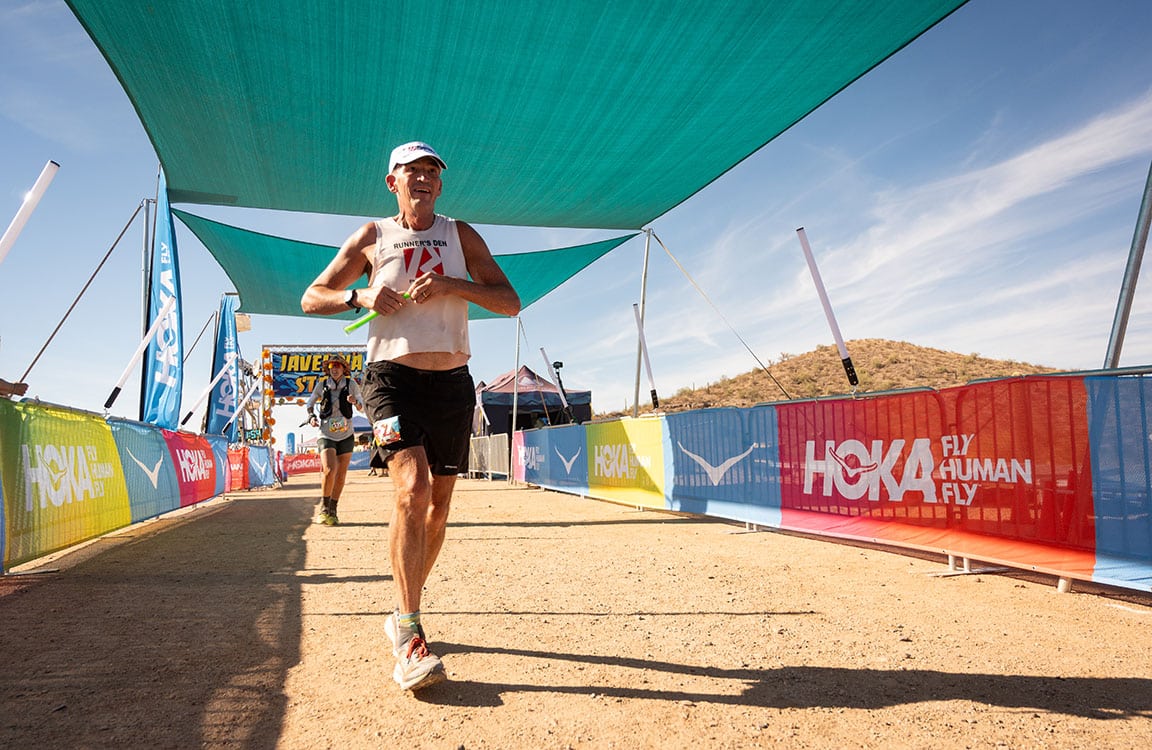
5 Signs You’re Ready to Sign Up For An Ultramarathon
By Andy Jones-Wilkins
CTS Ultramarathon Coach
Runners who are thinking of making the jump to ultramarathon distances frequently ask me what they should do to prepare for the increase in mileage and how they will know they are ready. As with many things in this sport, that’s often a matter of individual circumstances. However, over the years I have compiled a list of the five common signs I see from athletes when they are ready to step up to their first ultramarathon:
Enjoying This Article? Get More Free Running Training Tips
Get our coaches' best training advice, delivered straight to your inbox weekly.
► Free Ultrarunning Training Assessment Quiz
Take our free 2-minute quiz to discover how effective your training is and get recommendations for how you can improve.
1. You’ve figured out how to eat solid food and run at the same time
There are no two ways around it, eating solid foods while running is imperative for anyone graduating to ultramarathon distances. Some speedy folks may be able to fuel race pace entirely on sports drinks and gels, but most runners are out on course long enough to need the bulk and mixed macronutrient content solid foods provide. Being able to consume solid food and digest it without suffering GI distress is a fundamental key to ultrarunning success.
If you can wolf down a peanut butter sandwich and a handful of pretzels without breaking stride you are ready to roll. As time goes on, your gut will adapt to handle greater volumes of food and fluids per hour.
2. You know you don’t always have to run when you are on a run
One of the great secrets to ultrarunning – and something non-ultrarunners don’t always realize – is that it’s not all about running. In fact, being able to walk efficiently and powerfully is essential for ultramarathon success. To be ready for your first ultramarathon, it’s important that you are OK with walking. It’s okay, you can call it “hiking” or even “power hiking” if you want.
It’s true what they say, that walking is the best way to be a good runner. Or, as the classic Western States 100 saying goes, “If you can’t run, walk. If you can’t walk, walk anyway.”
3. You know not every run will be fun
Recreational running at sub-ultramarathon distances can be quite fun. If you don’t add excessive distance or intensity, it can often stay that way. However, in ultrarunning, there inevitably comes a time when a run ceases to be fun and turns into a physically painful and mentally challenging grind. You know you’re ready for ultramarathon training when at least a part of you looks forward to reaching the “pain cave” part of a long run.
In order to be prepared for inevitable but temporary misery, you must practice being uncomfortable in training. Then, when that time comes in your first ultra, say, when you hit mile 26 of a 50K and realize you still have 5 miles to go, you’ll be ready.
4. Your feet and quads are seasoned
There are several physical indications you need to look for when preparing to run your first ultra. Two of the most important are seasoned feet and quads. Regular training in moderately hilly terrain tends to accomplish both of these goals. You should be at a point where long runs and even wet socks don’t destroy your feet. Reaching this point will be a matter of learning what shoe/sock combination works for you, and how to care for your feet. Similarly, your quadriceps shouldn’t be wrecked the day after a long run in moderately hilly terrain. Long and technical descents in training and races will still lead to sore quads, but everyday undulations shouldn’t. Ideally, if you can run a 20 miler with 5,000 feet of descending with soaking wet feet, and come away intact, you’re ready.
5. You get back from a 20-mile training run and think, “That wasn’t so bad.”
Mental readiness for your first ultramarathon may be more important than physical readiness. To know you are ready between the ears, you need a healthy respect for the distance as well as a certain degree of confidence that you can cover that distance. The best way to do this is to take stock after a long run. If your regular 20 miler doesn’t feel “that long” then it’s time to log onto ultrasignup.com and pull the trigger.
Being able to rip a 20-mile run on any given day (not that you would, but you could), is a sign of an ultrarunner who has a significant base of ultramarathon fitness and experience. These are the runners who need to tailor their fitness to the demands of specific events, but can be event-ready in a few months. New ultrarunners who must work up to a 20-mile training run can race ultramarathons, but should give themselves a longer (6+ months) runway between the start of training and race day.
Tip: Give yourself ample training time before your first ultramarathon
Being ready to sign up for your first ultra doesn’t necessarily mean you’re ready to run one next week or even next month. Everyone starts with different levels of fitness and experience. To enjoy your first ultramarathon it pays to be patient and diligent with your training. Fall and winter are the best times to make the decision to make the leap to ultramarathons, because you can set a goal for next spring or summer and have a long runway to deal with the inevitable ups and downs and schedule snafus that will come along.
Although I’m biased because I’m a coach, I’d also recommend working with a professional coach as you make the step up to ultramarathon training. Increasing training volume, in terms of hours and miles, is a leading cause of injuries when athletes make changes too quickly or fail to recognize the early signs of trouble. You’re taking this journey for the first time, but we’ve guided athletes on this journey thousands of times. To find out how working with a coach works and what it can do for you, schedule a free consultation with CTS Coach here.


Comments 3
Stop motivating me lol! 🙂
Huh. For me it was, “That sounds like fun” and “I bought this book…”
SAME!- Koop’s book….. Lol.
No regrets.- (I was in my late 40’s and was not a runner). Yes, I hired a coach! Yes, I completed a 55K this past summer. Thank you CTS for enabling me to work (and continue to work) with Sarah. Here’s to learning to love the process of challenging your self~ Cheers!